By Eric Vandenbroeck and co-workers
Progress in quantum
technologies is poised to considerably impact future warfare. Apart from quantum
radars – which can potentially make stealth vectors and jamming techniques
obsolete – the application of quantum physics may also have deeply disruptive
effects in other fields. Quantum-based encryption, communications and computing
are expected to revolutionize how information is elaborated and exchanged by
drastically increasing calculating power and security. This would complicate
intelligence-gathering activities, but would also turn the material
infrastructure supporting these technologies into a primary target for enemy
strikes. China seems to be leading the way in this emerging technology that
involves cutting-edge research programs and sophisticated satellites orbiting
around Earth, but other powers are also involved, and the outcome of this
competition, will have serious consequences in the decades to come.
Securing Information: The Physics Of Quantum
Encryption
Normally, information
security is ensured by using complex algorithms to encrypt data and make them
unintelligible to eavesdroppers. But with enough time and computational power,
these cyphers can be cracked, thus allowing intercepted messages to be read.
Technological progress (notably in quantum computers) will bring ever greater
calculation power, which will have the effects of making it easier to break
cyphering codes and reducing the effectiveness of traditional encryption.
A potential answer to
this challenge comes from quantum physics itself. The fundamental point is that
sub-atomic particles can be influenced so that they take on one of two
different states. When the particle is observed, it takes only one of them. But
when it is not observed, it exists in a particular condition called
‘superposition,’ meaning that its status is a combination of the two. Or in
other words: it holds both statuses at once. The simple acts of observing it
will end the superposition and force the particle into taking on one of its two
possible states. Another peculiar and counter-intuitive property of quantum
physics is that two particles can be ‘linked’ so that they take on and preserve
the same state, even if they are considerably distant from one from the other.
This is a phenomenon known as ‘entanglement.’
These innate
properties can be exploited to store, carry, and deliver information – all in a
perfectly secure manner, thanks to a process called quantum key distribution
(QKD). Everything starts with the generation of a pair of ‘keys’ encrypted
using entangled photons. These keys are employed to cypher the transmitted
message and then convert it back into a readable form. In practice, this is
achieved by transmitting the photons (and the information they carry) in the
form of a laser beam. The first experiments did this via optical fibers, but it
was soon discovered that they were not an adequate vector because they absorbed
the signal, thus causing the entanglement to break at a relatively short
distance, resulting in a loss of information. To solve the problem, a chain of
quantum repeaters was created to receive and retransmit the message. Another
alternative would be to use satellites, a process that requires great precision
though it’s more effective since the signal can be transmitted unaltered to and
from Earth across the vacuum of space (even though it could be affected when
traversing the atmosphere). In any case, the superposition of the photons
guarantees the transmission’s security: if a third party attempts to intercept
(and therefore observe) the message, the quantum status will immediately
change. This will not only modify the ciphering keys, thus making the message
impossible to decrypt, but will also be noticed by the users who will then
abort the communication attempt or alter the message.
This revolutionary
method of encrypted communication has been successfully tested by China in 2018
via the Quantum Experiments at Space Scale (QUESS) program, which employed the Micius (Mozi) satellite to successfully enable a video call
between Beijing and Vienna.1 This fist-time event caused a sensation around the
world, not only as a scientific breakthrough but also because of its security
implications – even more because it suggests that China is ahead of all other
powers in the critical domain of quantum technology.
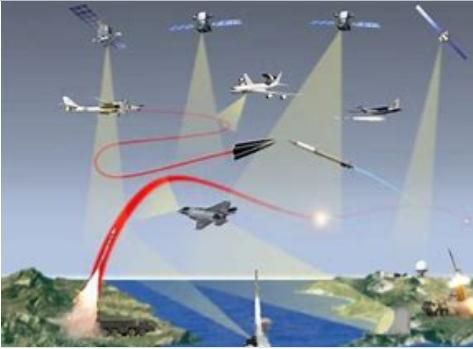
The Effects on Intelligence
If quantum encryption
lives up to its billing and is fully developed along with the necessary support
infrastructure, the technology will be a game-changer in the field of
intelligence-gathering.
Technically known as
signal intelligence (SIGINT), the interception and decryption of messages is a
major source of information used by governments to collect data on rivals and
allies alike. As an example, the US National Security Agency (NSA), which is
responsible for SIGINT, is currently America’s largest intelligence
organization and its world-spanning activities were revealed in 2013 following
the disclosure of classified documents by former CIA employee Edward Snowden.
But the introduction of quantum secure keys would hugely complicate its task,
as traditional interception would become virtually impossible, leaving SIGINT
agencies no other choice but to focus on less secure channels (which would
reasonably be used for low-importance exchanges) or to obtain the messages from
alternative sources – both of which are also slower solutions. Without this
invaluable source, information collection could be severely undermined, and
with it the overall quality of intelligence analyses upon which governments and
military planners (should) rely on to determine the state’s foreign and
security policies.
This would inevitably
push rivals to seek alternative sources of intelligence to circumvent the
quantum encryption wall. While all techniques would be exploited, the most
likely consequence would be a revival of the human factor into intelligence
collection. The recruitment and management of undercover agents among officials
working in key agencies (like foreign ministries or military headquarters) has
always played a key and irreplaceable role; but it has partially lost its
importance in the past few decades of mass communication due to the
(over)reliance on intercepts. But this domain (known as human intelligence, or
HUMINT) will re-emerge as a fundamental resource if quantum encryption scales
back the role of SIGINT. As a matter of fact, other methods like imagery
intelligence (IMINT) or measurement and signature intelligence (MASINT) are
greatly useful for assessing the target’s capabilities, but they are of little
use for inferring intentions – which is paramount in intelligence analysis –
whereas HUMINT can provide extremely valuable information in this regard.
Yet this will not be
sufficient to completely compensate for the loss of intercepted messages, as
recruiting a covert agent is a long, complex, and risky endeavour.
Moreover, the consequences on state behaviour will
largely be influenced by whether quantum encryption will be used by one or both
powers involved in the mutual intelligence competition.
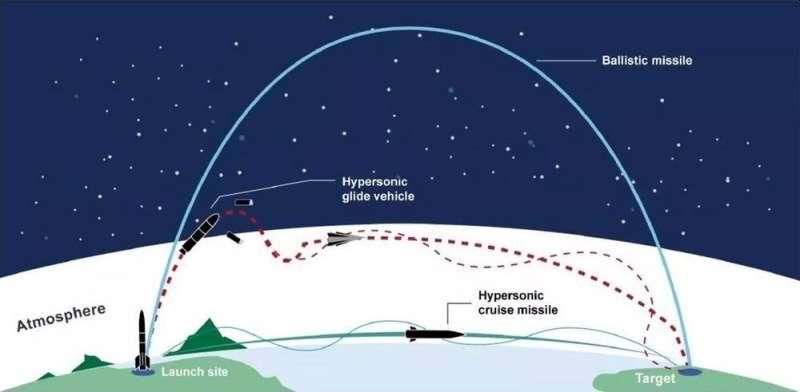
The Strategic Impact of Quantum Encryption
The first scenario to
consider is the asymmetric one, where a state uses quantum encryption and
another does not. This would put the former one step ahead of its rival: it
would be able to conduct its most secret activities (diplomacy, intelligence
gathering, development of new weapons systems, military operations and even
surprise attacks) with much less concern of being discovered, possibly to the
point of becoming emboldened into committing risky actions. If this state were
also capable of intercepting and cracking the other’s communications, then it
would possess a decisive advantage allowing it to outmaneuver its opponent, who
– unable to intercept the quantum encoded messages – would be working with far
less information to evaluate the intentions of the first state, possibly
leading to serious misinterpretations and miscalculations. This could be
particularly problematic in the event of a crisis, where urgency requires a
rapid and accurate assessment of the situation.
If both states were
to use this new technology, the result would be a strange stalemate where both
sides would be bolstered by their own information security but uncertain over
the other’s intentions. In this context, the risk of erroneous interpretations
becomes even greater as it involves both parties; and the intelligence
advantage will belong to the power capable of better exploiting other
techniques (notably HUMINT).
Yet, the consequences
are not limited to intelligence operations, but also extend to the military
level. First, quantum encryption will make it harder for the opponent’s
military planners to prepare for an armed confrontation due to less
available information. But this will also mean that the infrastructure
supporting quantum communications will become a primary objective for any
attack (and probably in an initial strike) in an attempt to deprive the enemy
of its advantage. Here, much depends on how the network will be built.
Satellites appear to be the best option; not only because they enable
long-range transmissions, but also because they potentially allow to send
messages to distant naval forces. The alternative is to build a network of
quantum repeaters, but this presents multiple problems: It is limited to ground
transmissions and the destruction of a single station would break the chain
thus making communications impossible. Moreover, ensuring adequate protection
of the whole grid would be complicated and expensive. Therefore, this solution
is probably adequate only for relatively small but advanced states; whereas
vast countries will opt for satellites. Yet, while shooting down an orbiting
object is not easy, defending it is even more challenging and powers like the
US, China and Russia have successfully tested anti-satellite (ASAT) weapons. As
a result, quantum communication satellites will likely be destroyed early after
hostilities commence, meaning that (unless effective solutions to protect satellites
are developed) the military value of this new technology will be limited to
intelligence-gathering in peacetime and in the preparatory phase to war.
The aforementioned
QUESS project suggests that China is currently leading the way in quantum
encryption, but the United States is doing its best to catch up. Washington has
been interested in the application of quantum technologies (not limited to
encryption) since the mid-90s, and began providing funding for research in the
field in the FY2008 budget.2 Quantum information science was included in the
broader National Strategic Computing Initiative in 2015 and the Trump
administration created a specific committee responsible for it in August 2019.
Other actors involved in quantum technology are the EU, the UK, and Canada.
Still, the United States and China remain the main players and it is possible
that they will both develop quantum encryption in the coming years, thus
reaching the kind of stalemate described above. How this would affect
international stability is uncertain, as much depends on how successful other
forms of intelligence are; but in case of a crisis the mutual impossibility to
recur to SIGINT for determining the opponent’s stance may result in dangerous
miscalculations. Considering the mounting tensions and the number of potential
flashpoints (Taiwan, the Senkaku/Diaoyu, the South China Sea, to name a few),
this is a risk worthy of serious consideration, as history shows time and time
again that intelligence failures can change the destiny of entire nations.
Hypersonic Missiles
Hypersonic missiles
are a new category of weapons which have sparked intense debate among security
experts. Capable of travelling over five times the speed of sound (Mach 5), and
of performing evasive maneuvers mid-flight, they are considered practically
impossible to intercept using conventional missile defense systems. Adding that
in some cases they can carry nuclear warheads, it is immediately clear why they
have caused so much concern in regard to their impact on the global strategic
equilibrium. The world’s leading military powers (the United States, China, and
Russia) and other states are working on their development. Even though their
specific technical characteristics and actual performance remain shrouded in
secrecy, hypersonic weapons are poised to become an integral part of future
warfare, with noteworthy implications in military and international terms.
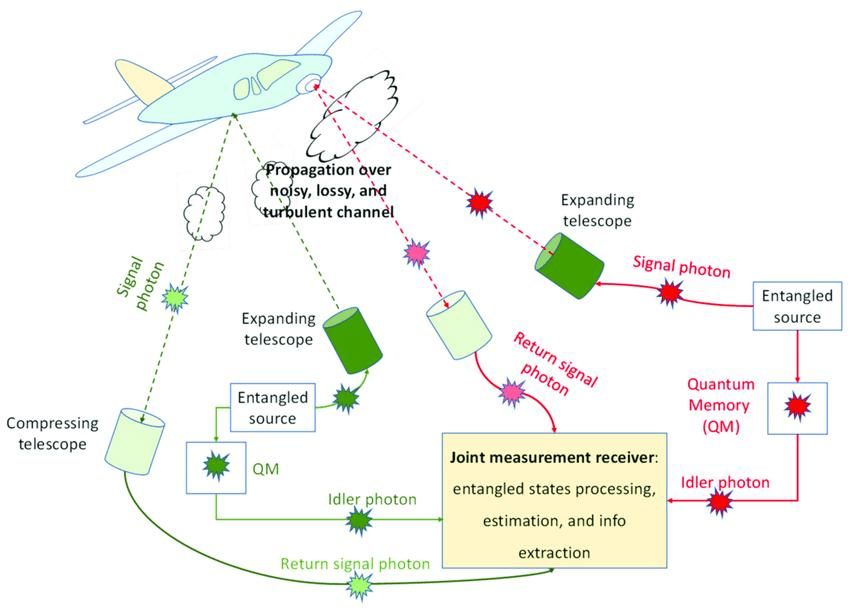
Hypersonic Missiles: The Current State of the Art
By definition,
hypersonic missiles are vectors capable of reaching speeds equal or superior to
Mach 5. There are two sub-types of systems. The first is hypersonic glide
vehicles (HGVs), which are launched by ballistic missiles and separate from
them in flight to glide at hypersonic speed toward their target; the second is
hypersonic cruise missiles (HCMs), which are fired like conventional cruise
missiles and use scramjet engines to reach the required speed. In both cases,
their sheer rapidity combined with the ability to perform complex evasive
maneuvers makes interception a nearly impossible challenge. As of today, no
missile defense system is considered capable of intercepting hypersonic
vectors. The United States has explored various anti-hypersonic solutions, but
they are still at an early stage of development. Accordingly, no effective
defenses exist today against hypersonic strikes; and even though progress may
be made in the future, interception will remain a daunting technical challenge,
especially in the case of a large-scale attack. Moreover, the fact that
hypersonic systems can be armed with nuclear warheads elevates this technical
problem to the level of strategic deterrence. Unsurprisingly, the United States
has paid particular attention to the development of hypersonic missiles,
monitoring both progress made by its own programs as well as those of
competitors and allies, as shown by a recent report by the Congressional
Research Service.3
Russia and China are
developing hypersonic weapons in the context of their anti
access / area denial (A2/AD) strategy designed to keep US forces far
from their territory and make it impossible for them effectively operate
nearby. According to this logic, hypersonic missiles would be used to threaten
US carrier battle groups, forward bases, logistical infrastructure, etc. In
addition, both regard hypersonic vectors as acountermeasure
to overcome US anti-ballistic missile defenses, which in their opinion undermine
the nuclear balance by (theoretically) allowing the US to launch their nuclear
weapons without fear of retaliation. Owing to their ability to bypass existing
defenses, hypersonic missiles would deprive America of its perceived advantage
and restore the traditional equilibrium based on mutually assured destruction
(MAD).
China has developed a
single hypersonic weapon, the DF-ZF (previously called WU 14). This HGV is
believed to have a range of 2,000 kilometers and a top speed of Mach 10, and is
mainly conceived as an anti-ship ‘carrier killer’ weapon. China has not clarified
whether it will be nuclear-capable or not, but has allegedly tested ballistic
missiles for its launch, notably the DF-21D. The weapon may become operational
before the end of this year. US sources also claim that China tested a Mach 6
hypersonic vehicle called Xing Kong 2 (‘Starry King 2’) in 2018, but there is
little info on this system.
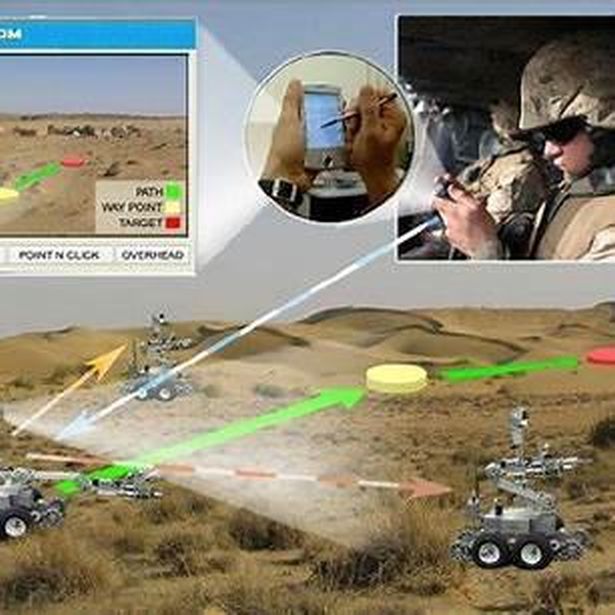
For its part, Russia
seems to be leading the way in the deployment of hypersonic systems. The Avangard (Project 4202 / Yu-74) is a nuclear-capable HGV
which entered into service in 2019. With a range of at least 6,000 kilometers,
it is equipped with electronic countermeasures, it can perform evasive
maneuvers and it can allegedly reach Mach 20; even though this may well be an
exaggeration. The 3M22 Tsirkon (Zircon) cruise
missile has an estimated range between 400 and 1,000 kilometers and a speed
between Mach 6 and 8. It is primarily conceived as an anti-ship weapon fired by
naval and air units. The Kh-47M2 Kinzhal (‘Dagger’) is an atypical system,
since it is neither an HGV nor an HCM but rather a hypersonic ballistic
missile. With a range of 2,000 kilometers, it can reportedly reach Mach 10. It
can carry a nuclear payload and strike ground and naval targets alike. It is
expected to become operational in 2020.
The US started
developing hypersonic weapons as a possible implementation of the Conventional
Prompt Global Strike (CPGS) concept, meant to enable American forces to hit any
target in the world within one hour. Dating back to 2008, it was revived to
counter China’s and Russia’s A2/AD strategy by enabling US forces to strike
sensible targets like Command, Control, and Communication (C3) centers,
military bases, logistical nodes, critical infrastructures and other strategic
facilities to undermine the enemy’s warfighting capabilities.
Currently, the US has
three hypersonic missile programs. First comes the Navy-led Conventional Prompt
Strike (CPS), meant to equip a Virginia-class submarine with HGVs. This vector
is also the basis for the Long-Range Hypersonic Weapon (LRHW) of the Army,
aimed at developing a land-based mobile vector with a range of 2,200
kilometers. Lastly, the Air Force is developing the AGM-183 Air-Launched Rapid
Response Weapon (ARRW), smaller in size and meant to equip B-52 strategic
bombers. It is important to note that, according to official declarations, none
of these programs are on-track to develop nuclear-capable vectors.
Other powers are
developing hypersonic weapons. Australia is cooperating with the United States
on the Hypersonic International Flight Research Experimentation (HIFiRE) program, which resulted in several tests of both
HGVs and scramjets. Japan is also working on both HGVs and HCMs; the former
comes in anti-carrier and area suppression variants and should be deployed
between 2024 and 2028. India has been cooperating with Russia on the BrahMos II
HCM, and some reports indicate it is also developing an indigenous system of
the same type. France has also sought Russian collaboration on hypersonic
systems, and is modifying its ASN4G cruise missile to reach hypersonic speeds
under the V-max (Experimental Maneuvering Vehicle) program. The new weapon is
possibly meant for nuclear strike. Germany tested the SHEFEX II HGV in 2012,
but the government has apparently reduced funding for the program. Finally,
other countries have experimented hypersonic technologies, but apparently with
no military intent. These include South Korea, Israel, and Iran. It is notable
that most of these countries are advanced economies with considerable military
concerns, in several cases involving China.
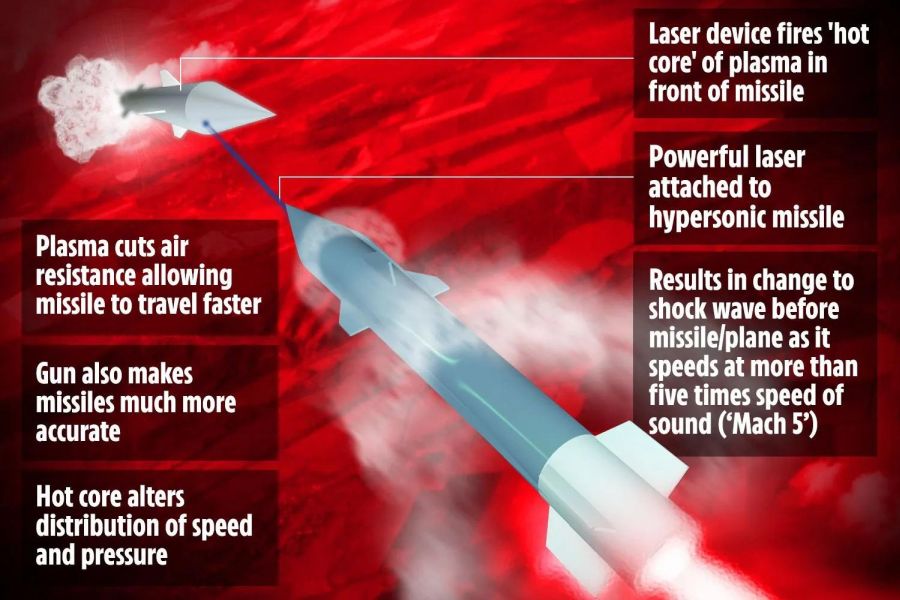
The Strategic Impact of Hypersonic Missiles
The first concern
arising from the development and deployment of hypersonic systems is their
effect on the nuclear balance. The argument advanced by Russia and China that
hypersonic vectors restore equilibrium thanks to their ability to penetrate US
missile defenses (that they consider destabilizing) is theoretically valid, but
in practice is much weaker. While hypersonic systems are currently impossible
to intercept, ordinary missiles are also difficult to destroy in flight and a
mass attack would be equally unstoppable. As such, Russia and China’s argument
seems more motivated by the need to justify their hypersonic programs, which
are to be interpreted in an A2/AD logic. On the opposite side, many believe
that hypersonic systems have destabilizing effects due to the impossibility to
ascertain whether they carry conventional or nuclear payloads (ambiguity). Yet,
this problem is not unique to hypersonic systems, as there are numerous
traditional ballistic and cruise missiles affected by the same problem. Therefore,
hypersonic missiles do not bring significant changes to nuclear attack
capabilities and rather than nuclear vectors they seem mainly conceived as
conventional weapons to deliver rapid strikes to critical targets. Accordingly,
it can be concluded that they do not have sensible destabilizing effects per se
and do not make war more likely.
However, in case of a
crisis between great powers sparked by external factors, they may favor an
escalatory logic. In such conditions marked by high levels of stress caused by
a (perceived) imminent armed threat to vital national interests that leaves little
time for response, state-to-state communication deteriorates and
decision-makers employ mental shortcuts to quicken their choices, thus making
the decision-making process less rational. Under such circumstances, each side
may either be tempted to employ hypersonic missiles to launch a rapid and
(expectantly) debilitating first strike to gain a decisive advantage or
to employ its hypersonic assets for a preemptive attack to prevent the opponent
from doing so. This would result in a ‘shoot first or lose it’ logic that may
lead to an unintended, and possibly nuclear, escalation. In short, hypersonic
systems carry the risk of making a crisis more acute, with potentially
catastrophic consequences.4
As hypersonic systems
exit from the experimental phase and become operational, in the short-medium
term they will remain the prerogative of advanced countries possessing the
necessary resources, technical infrastructure, and know-how. Yet, they will
have to be taken into account by military planners. If current expectations are
met, they will become powerful tools in state military arsenals, but they will
also raise the risks of escalation in the event of a crisis. Therefore, their
employment should be carefully assessed and should be governed in a crisis
management rather than a warfighting logic to avoid an escalation that may
degenerate into a major conflict.
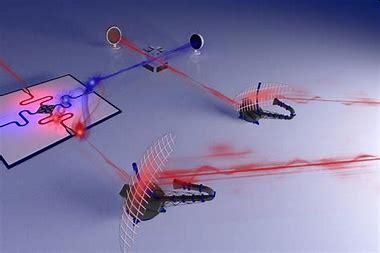
Quantum Radar
When it was first
introduced by the US armed forces toward the end of the Cold War, stealth
technology represented a major shift in the conduct of military operations. Low
radar observability – a more appropriate term for ‘stealth’ – allowed American
aircraft to safely penetrate into heavily defended areas without being detected
by enemy sensors; and it demonstrated its operational value for the first time
during the 1991 Gulf War. It then became an integral part of US military
operations, one that was gradually applied to other platforms, including ships.
While today it is no longer a US monopoly, since other powers like Russia and
China have also deployed hardware with purported low observability features,
the technology remains the exclusive domain of advanced militaries and provides
a significant operational advantage.
New experimental
technologies, however, hold the potential to change the status quo. A new kind
of sensor, called ‘quantum radar,’ holds the promise of detecting stealth
platforms. While this technology is still in its early stages and currently
presents notable technical limitations, if successful it could usher in the
next chapter in the everlasting dialectic between defense and offense in
warfare.

What are Quantum Radars?
The first step to
assess the potential strategic impact of quantum radars is to understand how
they work and how they differ from traditional models.
‘Radar’ is actually
an acronym for ‘radio detection and ranging,’ a term which reveals its basic
functioning principle. Radars emit radio waves that, when they hit an object,
are reflected back to the source. By analyzing this return signal, radars are able
to detect and track the object. To avoid this kind of tracking, there are two
possible solutions. The first is jamming, which means producing a signal in the
same wavelength as the radar to interfere with it so that it cannot distinguish
the return signal from the spoofing emission, thus ‘blinding’ it. The second is
using stealth systems which exploit design features like radar-reflecting
shapes and radar-absorbent materials to reduce their radar cross section (RCS,
the amount of radio energy reflected to the source) and render them harder to
detect. Even though no stealth platform is completely ‘invisible’ to radar, as
sensors operating in the very high / ultra frequencies (VHF / UHF) band can
successfully detect a low-RCS object, this remains a complex endeavor that does
not result in a sufficiently precise localization that allows for targeting.5
entangled, they have
the same quantum state and any change in the status of one particle results in
a parallel change in the status of the other, even if the they are considerably
distant from one another. The quantum radar exploits this property by
generating a visible light beam of entangled photons which then splits in two.
One half is converted into the microwave band without changing its quantum
state and is then emitted by the radar. When the signal hits an object, it is
reflected back to the source and converted back to the visible wavelength in
order to be compared with the other half of the original beam. Since the
quantum state of its particles changed when it collided with the object, the
system can detect its presence by observing the differences in the quantum
status of the particles present in the two beams and by filtering out those
from other sources. A properly-functioning quantum radar would therefore make
both jamming and stealth technology useless. Since the jamming system cannot
know the quantum state of the radar signal, the characteristics of the spoofing
emission will not match and will automatically be ignored. As for stealth
platforms, they would still retain their ability to disperse most of the
incoming radar signal, but a small part – not sufficient to be detected by
conventional radars – will still come back to the source and the observation of
changes in the particle’s quantum status will result to detection.
Naturally, quantum
radars also have their limits. Apart from the fact that they are an
experimental technology that needs to be significantly perfected before
becoming operational, the main problem lies in their limited range. As a matter
of fact, particles lose their entanglement properties at some point due to a
phenomenon called quantum decoherence, meaning that quantum radars also lose
their ability to detect targets. In 2015, a study concluded that the effective
range of quantum radars would be under 7 miles, but the following year a
Chinese team claimed to have manufactured a quantum radar of 61 miles of
range.6 While the ability to detect stealth platforms at such distance would
still be a considerable feat, it remains much lower than the range of conventional
radars. Nevertheless, the prospected introduction of quantum radars in the
years ahead may have deep consequences in both military and geopolitical terms.
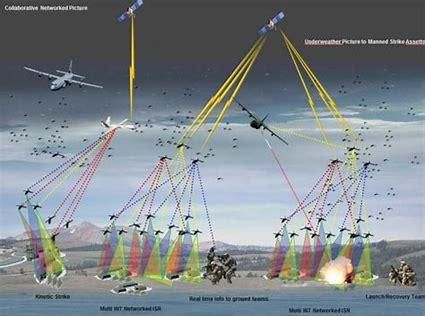
Quantum Radars: Three Possible Scenarios
Given the importance
of stealth systems in the US military, any power determined to counter its
superiority would be interested in quantum radars. As of today, China seems to
be leading the way in the field; but the same logic also applies to Russia. Quantum
radars would represent a significant enhancement to their anti-access / area
denial (A2/AD) strategy conceived to prevent US forces from operating close to
their territory. As stealth technology and electronic warfare (EW) techniques
such as jamming played a central role in US military operations to penetrate
into heavily-defended environment to strike the enemy’s command & control
(C&C) centers and critical logistical infrastructures, quantum radars would
significantly affect the attack capabilities of US forces. At the same time,
the low range of quantum radars also limits their value as anti
stealth solutions; even though sensor fusion – the sharing of data
between different platforms to have a greater view of the battlespace – could
offset this problem at least to a certain degree. If quantum radars were able
to send detailed enough data on the position (including altitude for aircraft),
speed and direction to missile launchers, the latter could use the information
to guide their weapons to the target; but this solution presents its own
technical challenges.
Depending on the cost
and capabilities of quantum radars, three theoretical scenarios are possible,
which may coincide with different phases of their development.
If they will turn out
to be highly expensive and limited-range systems, as is likely over the short
term, they will hardly have any operational value, as enemy stealth platforms
would be able to engage their target with long-range standoff weapons well before
entering into the quantum radars’ detection zone.
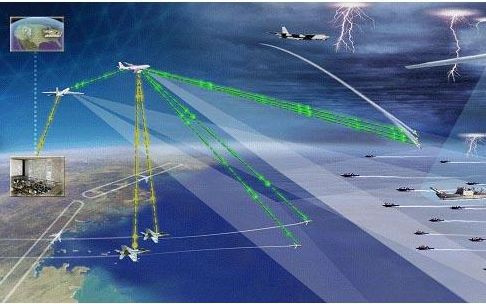
If their cost will
diminish without significant improvements to their range (possible medium-term
scenario), quantum radars will probably be deployed to form dense’ grids’ of
networked sensors to ensure an extensive coverage at least over sensitive target-rich
areas. Even though it would complicate the C&C structure of the defenders,
this kind of scenario would also present significant challenges to the attacker
due to the difficulty of locating and neutralizing a large number of radars and
thus disrupting the grid’s efficacy. This would be a time-consuming and
resource-intensive endeavor, which may be simplified only with accurate
intelligence on the location of the individual stations (which would not be
easy to obtain) or possibly by using drone swarms to carry out a complex search
& destroy operation.
Finally, in the long
term the detection range of quantum radars may increase, resulting in a similar
use as conventional radars; with the cost influencing only the number of
stations deployed. By ensuring detection of enemy aircraft or surface ships
over whole regions (for instance the South China Sea), this would have deep
strategic consequences. Another possible implication of long-range but low-cost
systems would be their miniaturization, allowing them to be mounted on mobile
ground vehicles, fighter planes, and so on. This would provide anti-stealth and
anti-EW capabilities to expeditionary forces and may potentially lead to a
proliferation and a ‘normalization’ of quantum radars that would significantly
change warfare.
The Strategic Implications of Quantum Radars
These are of course
archetypical scenarios, and reality is likely to take in-between forms also
depending on the user’s specific strategic environment. Yet, they allow to make
some predictions on the impact of quantum radars on international stability. Thanks
to their ability to ignore RCS-reducing features and jamming techniques, they
would make it much harder for an attacker to launch a surprise attack with the
intent of debilitating its adversary. By reducing the appeal of such an
escalatory move, quantum radars would therefore have a stabilizing effect. Yet,
warfare is a dialectic process where any advance in defense results in efforts
to circumvent it.
To bypass China’s and
Russia’s A2/AD ‘bubbles’ that quantum radars create alongside other systems,
the US will reasonably place greater emphasis on submarines, which can be
neither detected by radars (as long as they stay submerged) nor hit by the
majority of missiles (though there are examples of anti-submarine missiles);
even though another quantum-related technology – namely quantum magnetometers
known as superconducting quantum interference device, or SQUID – may offset the
benefits of this solution. Unsurprisingly, China seems determined to develop
this technology as well.7
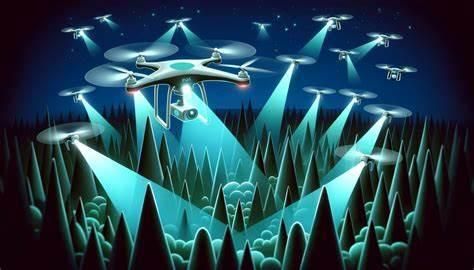
Hypersonic weapons
are another solution since they are nearly impossible to intercept and could be
used to neutralize quantum radars (as well as other critical targets); but this
may have destabilizing effects by triggering a ‘shoot first’ dynamic where the
US would be tempted to use them to quickly overcome Chinese/Russian defenses
and the latter would consider a preemptive hypersonic strike out of fear of
being the victims of one.8 In this sense, quantum radars may indirectly have
destabilizing effects; but this is mainly the consequence of hypersonic
missiles themselves, also because their influence on the decision to launch a
hypersonic first strike would be limited by the fact that, to be effective,
such an attack would require complete and accurate intelligence on the location
of the quantum radars to be targeted, which is hard to obtain and would require
many missiles (especially in the ‘grid’ scenario described above, which implies
a large number of stations to destroy). On this basis, quantum radars will
probably have a globally stabilizing effect; but much depends on their actual
capabilities and the specific strategic environment where they will be
deployed.
To conclude, quantum
radars represent a promising technology with the potential to significantly
transform warfare in the 21st century by making stealth technology and jamming
obsolete in hypothetical great power conflicts. Yet, for the time being they remain
experimental systems that are still far from reaching operational use; and as
with all new technologies, a considerable margin of uncertainty remains,
meaning that only time will tell how quantum radars will affect warfare in the
decades ahead.
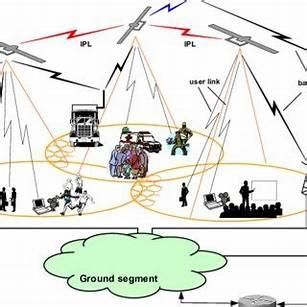
Drone Swarms
Unmanned systems with
a variable degree of autonomy, generally known as ‘drones,’ have become
commonplace in the world’s advanced militaries. In their various aerial,
maritime, and ground forms, these vehicles are used to perform a wide spectrum
of roles. Yet advances in new technologies such as artificial intelligence
(AI), robotics, and data fusion may revolutionize their employment by enabling
large numbers of drones to operate in a coordinated and reactive manner. If
fully developed, this concept – known as ‘swarming’ – could have profound
tactical and strategic effects; possibly to the point of changing the nature of
warfare in the 21st century.
The Current State of Drone Warfare
Today, unmanned
systems of different types are used by the militaries of various countries.
Here it is necessary to make some important distinctions. First, even though
flying platforms (unmanned aerial vehicles, UAVs) are the most common and the
ones that are primarily associated with the term ‘drone’ in the collective
imagination, they not the only kind of unmanned systems in use. In fact, there
are also land-based systems (unmanned ground vehicles, UGVs) and naval
platforms, which are in turn divided into two further sub-categories: unmanned
surface vehicles (USVs) and unmanned underwater vehicles (UUVs). Second, not
all platforms possess the same level of autonomy. Most are actually remotely
piloted systems, but there are also fully autonomous drones capable of
functioning without the (direct) intervention of human operators; one example
being the US Navy’s experimental X-47B. Finally, not all drones can engage
targets with weapons. While there are many examples of remotely piloted aerial
systems (RPAS) that carry missiles or bombs – such as the iconic US-made MQ 1
Predator and MQ-9 Reaper – fully autonomous platforms are much less likely to
be armed due to ethical concerns and technological limitations regarding
targeting and with respect to rules of engagement. As a matter of fact, lethal
autonomous weapon systems (LAWS) have been the object of a coalition of NGOs
known as “Campaign to Stop Killer Robots.” Yet, there are drones capable of
autonomously engaging targets such as Israel’s Harop (Harpy 2), a ‘kamikaze’
platform designed to detect and destroy enemy radars.
That said, drones are
employed to carry out various types of missions. These include intelligence,
surveillance, and reconnaissance (ISR); search & rescue (S&R);
logistics; mine-sweeping and destruction of improvised explosive devices
(IEDs); armed patrol; and even targeted killing. In such cases, drones operate
on their own or in small numbers, and each is piloted by its own operator(s).
However, advances in AI, robotics and data fusion may not only pave the way to
fully autonomous systems capable of independently performing complex missions,
but may also enable complex cooperation in a way that could radically change
warfare.
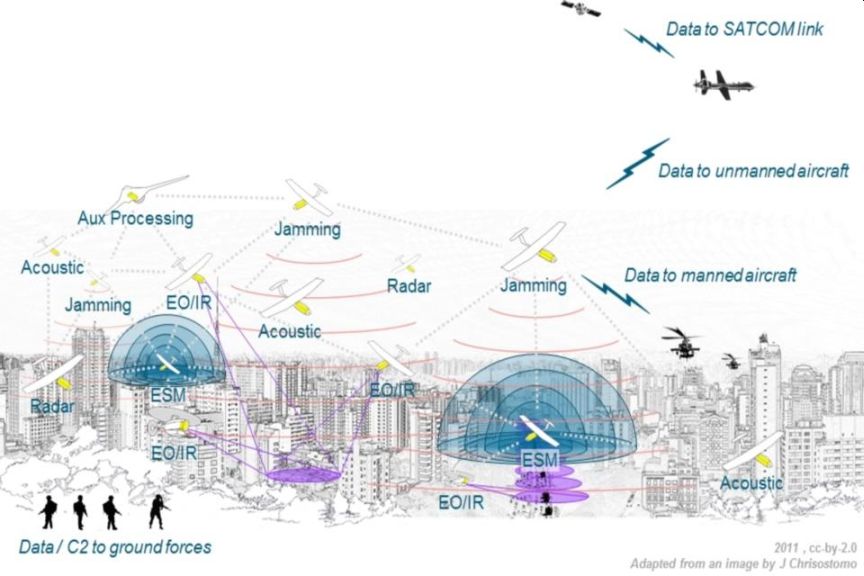
The ‘Swarming’ Concept
A paper by the US Air
Force defines swarming as “a group of autonomous networked SUAS [small unmanned
aircraft systems] operating collaboratively to achieve common objectives with
an operator on or in the loop.”9 Coordination and reactivity are of paramount
importance, since they represent the key distinction between a real swarm and
the employment of drones en masse. The latter occurs
when a large number of drones is used against a single target, mostly in order
to overwhelm it by saturating its defenses. Yet, each platform is controlled
separately from others, and there is no datalink coordination between the
drones themselves (even though the pilots can, of course, coordinate their
action). On the contrary, drones operating in a swarm are all interlinked and
in constant communication with each other. There is no clear threshold on the
quantity of drones that must be connected to create a swarm, with figures
ranging from a few hundreds to billions, also depending on their type and size.
What is important is that they share information from their sensors and take
AI-driven collective decisions toward the achievement of a single goal. This
datalink and the AI software are therefore essential in creating the ‘hive
mind’ that defines a swarm and allows it to effectively function; and each
single drone forming a swarm is just a small component playing a specific role
in a greater system which self-coordinates the actions of its elements in a
dynamic manner. Certain drones would use their sensors to locate and track
targets, sharing the information with the rest of the swarm; others would
perform jamming and electronic warfare tasks; another category would engage
hostile forces, etc. The swarm as a whole would react dynamically to changes in
the battlespace by performing complex non-linear and counter-intuitive
maneuvers.
It is therefore clear
that swarming holds an immense potential, to the point that it may
revolutionize warfare. Since they can patrol large areas with greater
efficiency and shorter reaction times than human personnel, thus speeding up
operations without risking the loss of lives, swarms would be particularly
suited for search & destroy missions against enemy air defenses, submarines
or mobile missile launchers; but also for ISR as well as counter-insurgency,
over-the-horizon targeting, air combat, and anti access
/ area denial (A2/AD). Symbiosis with manned platforms is also possible: For
instance, F-35 fighters equipped with advanced data fusion software could
control swarms and use them as force multiplies. Of course, creating a
functioning and effective swarm requires top-tier technology in terms of both
software and hardware; as it needs a powerful AI, advanced sensors, and
powerful data links. Accordingly, swarms will probably take decades before
being deployed and they will likely remain exclusive of high-tech militaries of
developed countries.
Even though at
present swarming remains largely theoretical and is still under development,
major military powers like the US, China, Russia and others have shown a great
interest in this concept and have already invested considerable resources in
its development. For instance, in 2016 a US project successfully launched a
swarm of 103 Perdix drones from three F/A-18 Super Hornet fighters. Given the
pace of technological advances over the past two decades, one can assume that
swarming will only grow in importance in the near future, potentially altering
the nature of warfare in the 21st century.
The Strategic Impact of Drone Swarms
On the geopolitical
level, it has been argued that swarms would continue the shift toward a
‘more-than-human’ geopolitics, where robotics and AI play a central role in the
unfolding of events, and where the ‘Baseworld’ (the
global net of military bases) constituting the framework of US power projection
capabilities turns into a ‘Roboworld’ made of small
lily pads scattered across the globe, which would virtually contract the
spatial distances thus enabling the US to exert its power anywhere and almost
constantly.10 As far as the United States’ near-peer competitors are concerned,
experts believe that swarms may boost China’s A2/AD capabilities and hamper
freedom of navigation in the South China Sea; whereas for Russia, other than
being A2/AD assets, they will also be extremely useful as force multipliers to
compensate its manpower shortage through automation (which represents an
important aspect of its military modernization, to the point that by 2025 it
aims to have 30% of its entire military force composed of drones).11 12 In both
cases, swarms may also empower them to quickly overcome weaker neighbors such
as Taiwan or Ukraine, just to name two.
On the purely
military plan, swarming could be the next step in the evolution of warfare,
representing a real quantum leap when compared to traditional maneuver
warfare.13 The large-scale coordination between interconnected systems acting
as a single and reactive entity would shorten the reaction times and compensate
for individual vulnerability with the swarm’s collective resiliency; thus
significantly enhancing the warfighting capabilities of the armed forces
deploying swarms and constituting a remarkable advantage over traditional
militaries. This is the reason why major powers are interested in the concept
and are seeking to gain an upper hand in the field.
However, this has
raised fears of a new arms race centered on AI and automation that could have
destabilizing consequences at the international level.14 The reason is twofold.
First, there are concerns that the possible over-effectiveness of swarms in search
& destroy operations could undermine nuclear second-strike capabilities,
which are largely based on mobile transporter erector-launchers (TELs) and on
ballistic missile submarines. This would be particularly destabilizing for
countries like China who have a rather small arsenal and whose retaliation
force is centered upon a relatively small number of TELs and underwater
vessels. Even though the real entity of this danger is debated and possibly
overestimated, the perceived threat may be per se sufficient to destabilize the
nuclear-based strategic equilibrium. Second, and partially linked with the
previous point, the speed and efficiency of swarms compresses the reaction time
for decision-makers to determine their course of action, thus prompting a ‘use
it or lose it’ logic that would increase the likelihood of escalation, possibly
to the nuclear stage. This problem, which becomes more acute in the case of a
crisis, is also linked to other systems that have already been deployed
(anti-satellite weapons) or that are being introduced (hypersonic missiles);
and their potential combination may have mutually reinforcing destabilizing
effects whose consequences could be catastrophic.
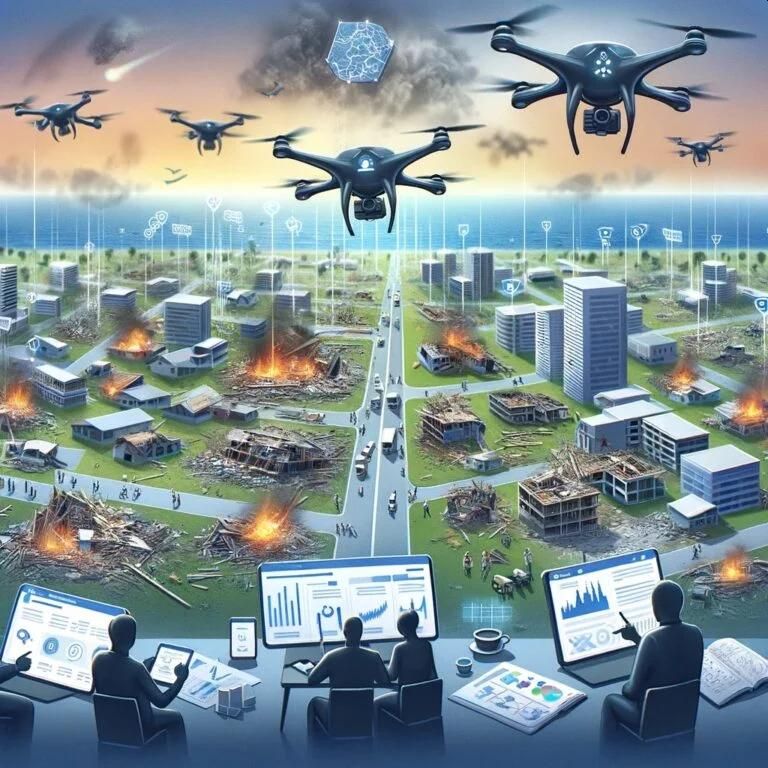
Looking Ahead
Even though it is at
the early stages of development and experimental application, swarming is a
concept that could radically change the nature of warfare in the coming
decades. Given the technical complexity and the high costs of the necessary
know-how, it is reasonable to assume that swarming will be the prerogative of
major military powers, who would enjoy a significant advantage against both
regular forces deprived of analogous capabilities and against insurgents thanks
to the swarm’s capacity to ensure a quasi-permanent and reactive monitoring
over a large area.
Obviously, there are
notable obstacles on the way: apart from legal and ethical issues, mastering
the technology will take considerable time and investments; moreover, the
swarm’s effectiveness depends on the stable connection between its component
and the proper functioning of the AI governing it, thus making it vulnerable to
spoofing, jamming, cyber-attacks or simple technical malfunctioning. It is sure
that as swarms are deployed and become more advanced, new efforts will be made
to develop effective countermeasures. Considering the inherent decentralization
of swarms and their ability to quickly react in a complex non-linear and
counter-intuitive manner, it is likely that the best counter-swarm weapon will
be another (larger and/or more advanced) swarm. What is certain is that drone
swarms hold an enormous potential, and given the interest that major military
powers are expressing toward this emerging technology, it is likely that drone
swarms will eventually become a prominent feature of 21st century warfare.
1.
https://www.technologyreview.com/2018/01/30/3454/chinese-satellite-uses-quantum-cryptography-for
secure-video-conference-between-continents
2.
https://crsreports.congress.gov/product/pdf/R/R45409
3.
https://fas.org/sgp/crs/weapons/R45811.pdf
4. http://www.strategikos.it/files/A.-Gagaridis_The-Strategic-Implications-of-Hypersonic-Missiles.pdf
5. https://www.defenceaviation.com/2016/05/how-to-detect-stealth-aircraft.html
6.
https://spie.org/news/quantum-radar?SSO=1
7.
https://nationalinterest.org/blog/buzz/no-more-stealth-submarines-could-quantum-radar-make
submarines-easy-track-and-kill-54547
8.
http://www.strategikos.it/files/A.-Gagaridis_The-Strategic-Implications-of-Hypersonic-Missiles.pdf
9. https://www.af.mil/Portals/1/documents/isr/Small_UAS_Flight_Plan_2016_to_2036.pdf
10.
https://www.academia.edu/34424378/Robot_Wars_US_Empire_and_Geopolitics_in_the_Robotic_Age_
Early_View_
11. For more on
Russia’s military modernization, see:
https://www.geopoliticalmonitor.com/russias-military
modernization-prevailing-in-limited-conflicts/
12.
https://www.academia.edu/38373946/Artificial_Intelligence_and_Future_Warfare_Implications_for_Intern
ational_Security
13.
https://www.researchgate.net/publication/328508821_How_swarming_will_change_warfare
14.
https://www.academia.edu/41364115/Artificial_Intelligence_Drone_Swarming_and_Escalation_Risks_in
_Future_Warfare
For updates click hompage here